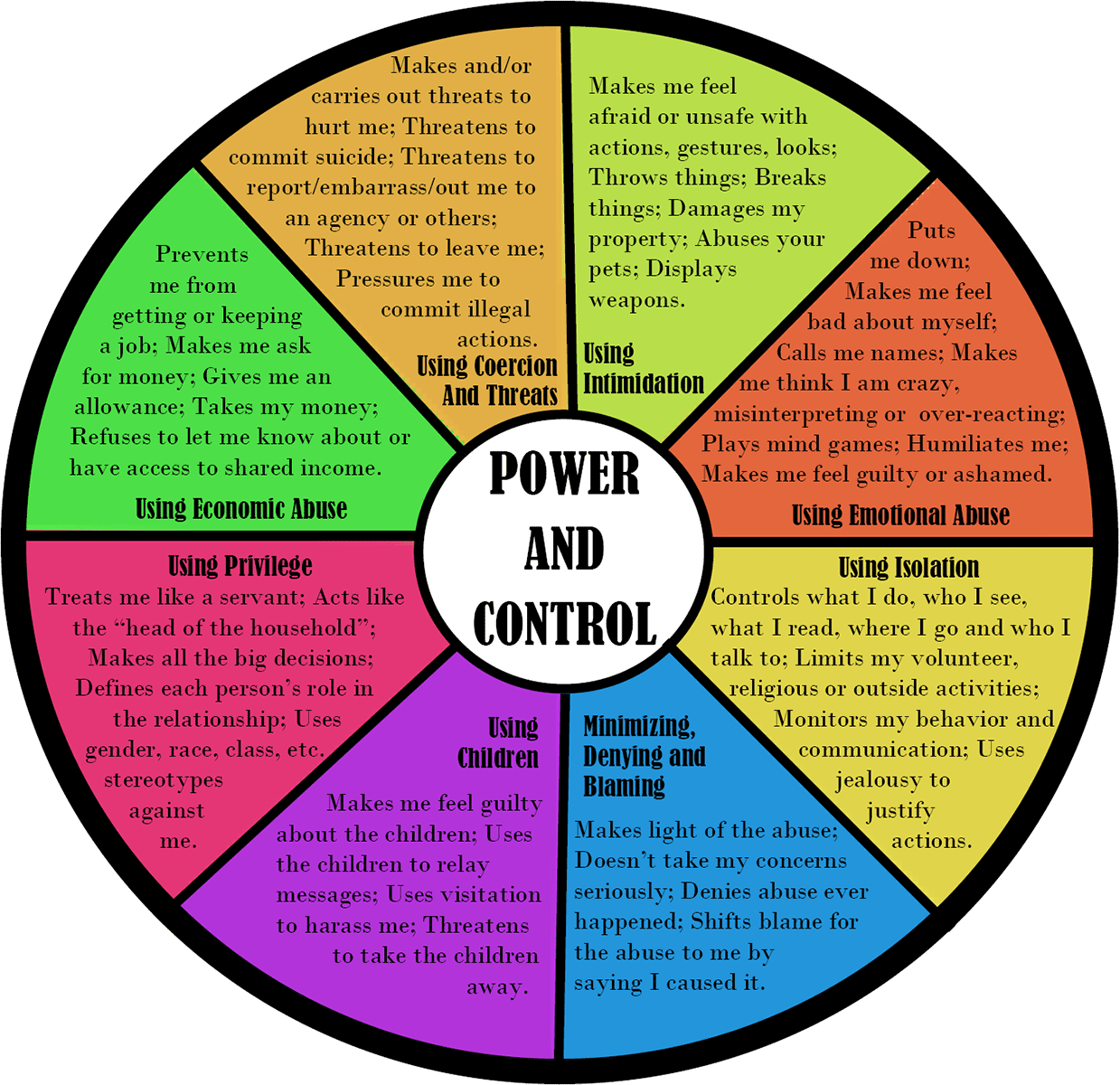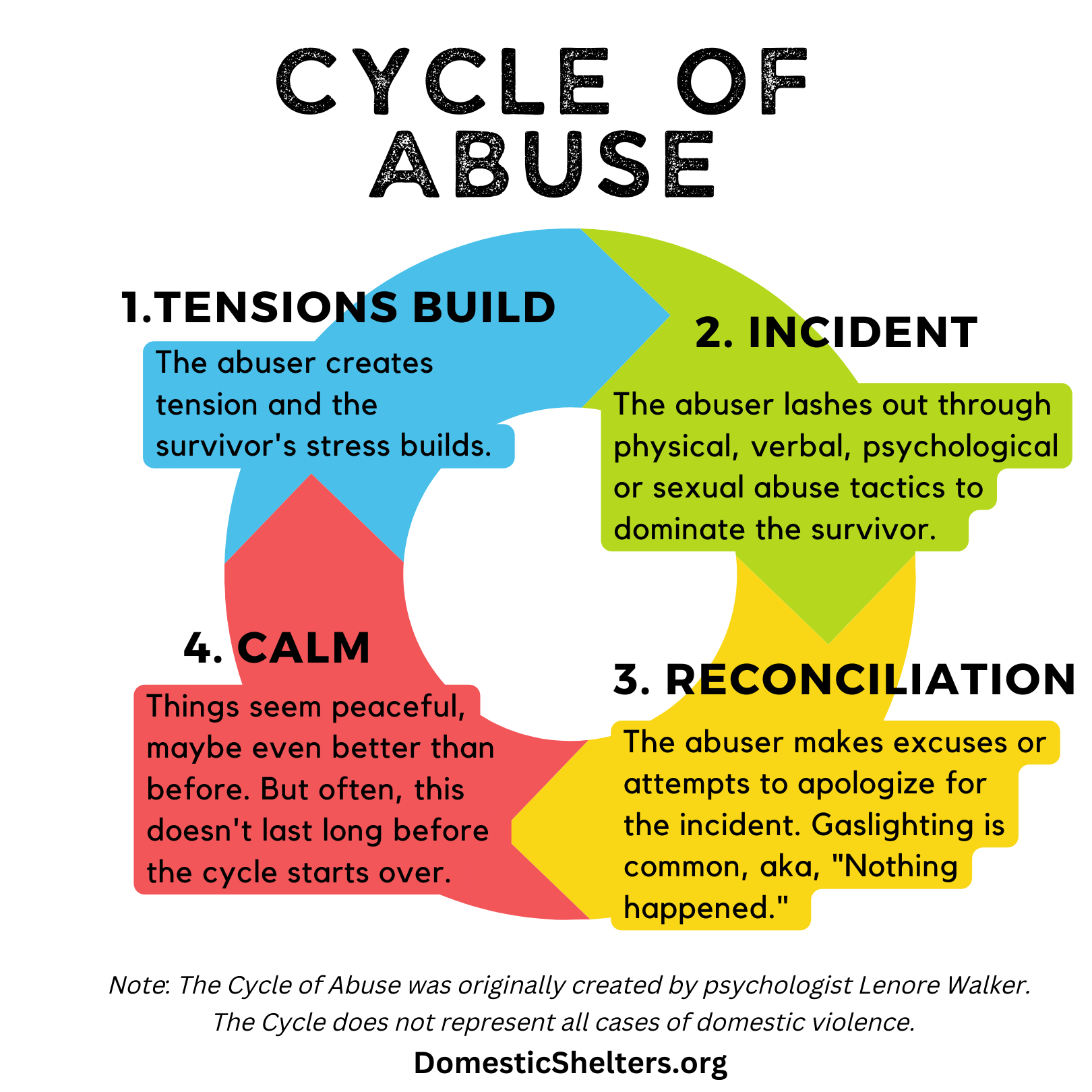Understanding Abuse
What is Domestic Violence & Abuse?
Many terms are used interchangeably to describe and discuss domestic violence. It may also be referred to as: abuse, domestic violence, battery, intimate partner violence, or family, spousal, relationship or dating violence.
Physical violence includes:
- Hitting, slapping, strangulation
- Kicking, burning, cutting
- Using or threatening to use a weapon
- Hurting or threatening to hurt a pet
- Destroying home or belongings
Emotional abuse includes:
- Constant verbal harassment
- Humiliation
- Food or sleep deprivation
- Threats or accusations
- Isolation from family or friends
Financial abuse includes:
- Forbidding you from working or going to school or sabotaging either (e.g., giving you a visible injury, denying you access to a car, calling you constantly at work, destroying your homework, etc.)
- Forcing you to turn over your paycheck
- Controlling all money, bank accounts, and assets and giving you an “allowance”
- Hiding assets or money from you
- Running up debt in your name or opening credit accounts in your name without your knowledge
Sexual abuse includes:
- Rape
- Forced sex, forced sex with others
- Unwanted sexual practices
- Sexual abuse of victim’s child
Stalking is also common within a violent relationship or after a violent relationship has ended; it can also occur without a violent relationship being present.
Abuse Warning Signs
Intense jealousy and possessiveness
An abuser may display extreme jealousy, constantly accuse their partner of infidelity, and isolate them from friends and family.
Controlling behavior
Abusers often exert control over their partners’ lives, dictating their actions, whereabouts, and choices. They may manipulate and undermine their partner’s autonomy and independence.
Emotional manipulation
Abusers use various tactics, such as gaslighting, guilt-tripping, and emotional blackmail, to control and manipulate their partners’ feelings, thoughts, and behaviors.
Verbal exploitation
This includes insulting, belittling, humiliating, or demeaning language that erodes the victim’s self-esteem and psychological well-being.
Physical aggression
This involves any form of physical harm or threat, including hitting, slapping, pushing, or choking of a victim or a victim’s loved ones.
Isolation and monitoring
Abusers may isolate their partners from friends, family, and support networks, monitor their activities, control their access to resources, and limit their independence.
Why do abused people stay?
Fear of the abuser’s violence
Leaving a violent relationship increases a victim’s risk of being killed or seriously injured by 75%.
Connection to the perpetrator through children
Some stay in the relationship due to beliefs, parental concerns, or fear of the abuser’s threats regarding the children’s well-being.
Continual hope and belief that the violence will end or they will change
Victims believe the abuser’s promises and desire an end to the violence, even if they don’t necessarily want to end the relationship, believing they have the power to improve it.
Lack of funds
Setting up a household without housing assistance can cost around $1500, while public housing waitlists are often long, sometimes exceeding six months, and not everyone qualifies.
Immobilization by psychological and /or physical trauma
Victims may be too injured or frightened to seek help or escape.
Belief in cultural, family, or religious values
Support systems may not always be supportive of a victim leaving or seeking help, with some family or religious systems pressuring them to stay in the violent relationship.
Belief abuser will commit suicide or engage in self-destructive behavior
Abusers often threaten suicide or employ manipulative tactics to make the victim feel guilty and worried.
Lack of real alternatives for employment and financial assistance
Domestic violence is the leading cause of job loss in the United States.
Taking steps to leave an abusive relationship requires immense strength and resilience.

Power and Control Wheel
The Power and Control Wheel is an invaluable tool in comprehending the complex dynamics of abuse and violence within and after a relationship. The illustration sheds light on the various forms of abuse that often accompany acts of violence, creating a pattern of intimidation and control in the relationship.
As depicted in the wheel, abuse follows a cyclical pattern. There may be periods of relative calm, but they are eventually followed by escalating tension and abuse, reaching a peak of intensified harm. This cycle tends to repeat, sometimes growing more intense over time. While every relationship is unique, abusers purposefully employ multiple tactics of abuse to instill fear and maintain control over their victims.
It’s important to remember that this wheel serves as a guide, and not every relationship conforms precisely to the depicted pattern. Some abusers may cycle rapidly, while others may exhibit longer stretches of time between abusive episodes. Nonetheless, the underlying objective remains consistent: to instigate fear and assert dominance over the victim.

Tension Building: The cycle begins with tension building, causing fear in the victim. Everyday stressors or larger events may trigger this phase. Victims may try to appease or provoke the abuser as a survival strategy.
Incident: The second phase involves an abusive incident, which can be physical, verbal, emotional, or psychological. It represents the abuser’s attempt to exert power and control, making it a dangerous time for the victim.
Reconciliation: The reconciliation phase follows, often characterized by apologies, excuses, and blame-shifting. Gaslighting may occur as the abuser denies or minimizes the abuse.
Calm: The cycle concludes with a period of calm, sometimes referred to as the “honeymoon stage.” However, this phase is temporary, as tension begins to build again, leading to another abusive incident.
Understanding the Cycle of Abuse helps illuminate the patterns and dynamics of abusive relationships, emphasizing the need for intervention and support for survivors.
Teen Dating Violence

%
of adolescents in the United States experience some form of dating violence.
teen dating violence cases involve cyber abuse, such as unwanted texting or harassment.
year-old girls are a leading demographic of date-rape victims, with more than 40% having experienced sexual violence in a relationship.
%
of Arkansas high school students experience physical dating violence in a 12-month period.
million high school students nationwide experience physical abuse from a partner each year.
%
of college students report having experienced at least one incident of sexual violence during their college years.
rapes of young women occur in their own home or loved one’s home.
%
of 15-19 year-old sexual-violence victims were abused by someone they previously knew.
%
of young people who experience rape or physical or sexual abuse will attempt to commit suicide
Abuse in the Disabled Community
- Withholding or damaging assistive devices.
- Threatening harm to service animals.
- Misappropriating or withholding disability checks.
- Engaging in non-consensual sexual activity with individuals unable to give consent due to their disability.
- Preventing access to medical care.
- Using disability to shame or humiliate.
- Neglecting essential daily tasks, such as assisting with medication or bathroom use.
More Information on Abuse of Disabled Individuals
National Disability Rights
ndrn.org
End Abuse of People with Disabilities endabusepwd.org
